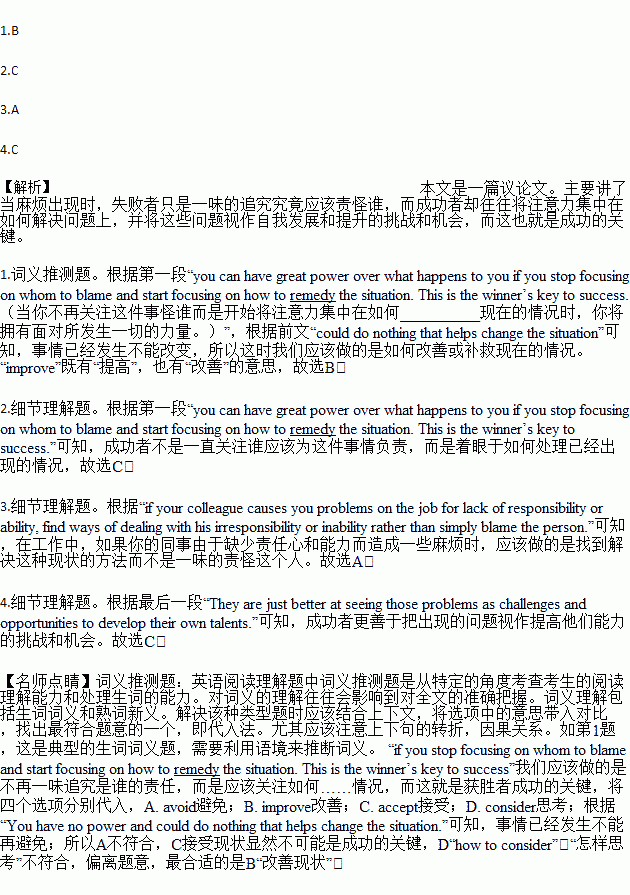题目内容
When something goes wrong, it can be very satisfying to say, “Well, it’s so-and-so’s fault.” or “I know I’m late, but it’s not my fault; the car broke down.” It is probably not your fault, but once you form the habit of blaming somebody or something else for a bad situation, you are a loser. You have no power and could do nothing that helps change the situation. However, you can have great power over what happens to you if you stop focusing on whom to blame and start focusing on how to remedy the situation. This is the winner’s key to success.
Winners are great at overcoming problems. For example, if you were late because your car broke down, maybe you need to have your car examined more regularly. Or, you might start to carry along with you the useful phone numbers, so you could call for help when in need. For another example, if your colleague causes you problems on the job for lack of responsibility or ability, find ways of dealing with his irresponsibility or inability rather than simply blame the person. Ask to work with a different person, or don’t rely on the person. You should accept that the person. Ask to work with a different person, or don’t rely on this person. You should accept that the person is not reliable and find creative ways to work successfully regardless of how your colleague fails to do his job well.
This is what being a winner is all about—creatively using your skills and talents so that you are successful no matter what happens. Winners don’t have fewer problems in their lives; they have just as many difficult situations to face as anybody else. They are just better at seeing those problems as challenges and opportunities to develop their own talents. So, stop focusing on “whose fault it is.” Once you are confident about your power over bad situations, problems are just stepping stop on for success.
1.The underlined word “remedy” in Paragraph 1 is closest in meaning to ________.
A. avoid B. improve
C. accept D. consider
2.According to the passage, winners ________.
A. have responsible and able colleagues
B. meet with fewer difficulties in their lives
C. deal with problems rather than blame others
D. blame themselves rather that others
3.When your colleague brings about a problem, you should ________.
A. find a better way to handle the problem
B. blame him for his lack of responsibility
C. tell him to find the cause of the problem
D. ask a more able colleague for help
4.When problems occur, winners take them as ________.
A. excuses for their failures
B. barriers to greater power
C. chances for self-development
D. challenges to their colleagues

